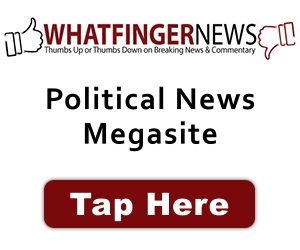Listen to a convo on the articles…. MUCH more below it…
I was happy to see that President Trump will be bringing Peter Navarro back to serve as the advisor on trade and tariffs. His position will not need to be confirmed by the Senate. Navarro served time in prison, because he refused to cooperate with the Congressional witch hunt regarding January 6
I was happy to see that President Trump will be bringing Peter Navarro back to serve as the advisor on trade and tariffs. His position will not need to be confirmed by the Senate. Navarro served time in prison, because he refused to cooperate with the Congressional witch hunt… pic.twitter.com/8jJP955Ppy
— Victoria 🇺🇸⏳🗽🚔 (@Loveof1776) December 4, 2024
Briefing Doc: Trump’s Tariff Policy and the De-Dollarization Movement
This document analyzes two articles, one from American Thinker and another from Liberty Beacon and Epoch Times, to explore the rationale behind Trump’s proposed tariffs and the potential for a de-dollarization movement led by the BRICS nations.
Source 1 (American Thinker):
This article argues in favor of Trump’s tariffs, presenting five key justifications:
- Behavior Modification: Tariffs can be used as a tool to force countries like China, Mexico, and Canada to cooperate on issues like drug trafficking and illegal immigration.
“Trump’s plan is to use tariffs punitively, to alter behavior.”
- Revitalizing American Industry: Tariffs can protect American jobs and revitalize industries that have been outsourced overseas, leading to a more balanced economic system.
“This may have enabled cheaper imports, but it also eliminated many of the middle-class incomes that Americans once relied upon to provide for their families.”
- Countering Inflation: While tariffs might increase prices, they can be offset by policies promoting domestic production, lower energy costs, and reduced housing demand due to stricter immigration control.
“If the costs (of tariffs) are passed on, then customers face a choice: continue buying the (now more expensive) import or switch to buying a domestic alternative (which will cost more than the import pre-tariff).”
- Shifting Consumption Habits: Encouraging Americans to buy fewer, higher-quality American-made goods can reduce reliance on cheap imports.
“Americans buy too much cheap junk.”
- National Security: Onshoring production of critical military and infrastructure components, particularly from adversaries like China, is essential for national security.
“It is ludicrous that many of the components in our military equipment and America’s infrastructure is made by our greatest adversary — China.”
Source 2 (Liberty Beacon and Epoch Times):
This article focuses on the potential threat to the US dollar’s dominance as the global reserve currency, particularly from the BRICS nations’ de-dollarization efforts. It highlights:
- Trump’s Tariff Threat: Trump has threatened a 100% tariff on BRICS economies if they attempt to abandon the US dollar or create a rival currency.
“We require a commitment from these countries that they will neither create a new BRICS currency, nor back any other currency to replace the mighty U.S. dollar or, they will face 100 percent tariffs…”
- BRICS De-dollarization Efforts: BRICS nations have been actively pursuing de-dollarization through bilateral trade in local currencies and exploring the possibility of a new reserve currency.
“BRICS—a nine-nation alliance… has been at the forefront of the de-dollarization initiative in recent years.”
- Dollar’s Continued Dominance: While BRICS efforts are significant, the US dollar still holds a dominant position in global trade and reserve holdings.
“Internal BRICS trade accounts for a little more than 1 percent of global trade, and the group’s share of worldwide reserves is approximately 5 percent.”
- Mixed Views on De-Dollarization Success: Experts are divided on whether BRICS can realistically challenge the US dollar’s hegemony, citing practical challenges and the dollar’s continued strength.
“A basket of basket cases does not stand a snowball chance of replacing the dollar…” vs. “While knocking the dollar off the global currency mountain ‘is out of the question for the foreseeable future’… the yuan’s growth is a trend to monitor in the coming years.”
- Russia’s Retort: Russia criticizes Trump’s tariff threats, arguing they will accelerate the move away from the US dollar.
“If the United States uses force… to compel countries to use the dollar it will further strengthen the trend of switching to national currencies.”
57 seconds of tariff arguments summed up: If other countries do not buy American products – we won’t buy yours. Simply put – we will have quality American products produced and bought by American people and therefore we will have American jobs. No more BS
57 seconds of tariff arguments summed up: If other countries do not buy American products – we won’t buy yours. Simply put – we will have quality American products produced and bought by American people and therefore we will have American jobs. No more BS pic.twitter.com/dqff7duO0S
— ꪻꫝể ꪻꫝể (@TheThe1776) December 1, 2024
Key Themes and Ideas:
- Protectionism vs. Free Trade: Trump’s tariff policy reflects a protectionist approach aimed at boosting domestic industries and jobs, potentially at the cost of higher consumer prices and strained international relations.
- National Security and Economic Interests: Both sources highlight the intersection of national security and economic interests, with Trump emphasizing the need to protect US industries and the dollar’s dominance for strategic reasons.
- The Future of the US Dollar: While the US dollar remains the dominant global currency, the potential rise of alternative currencies, particularly from emerging economies like BRICS, poses a long-term challenge to its supremacy.
Fox News Bombshell: Trudeau Begged Trump to Back Off Tariffs—Trump’s Response Proves America’s Strength is BACK! This power move (if true) shows what happens when real leadership takes the stage. Absolutely DOMINANT.
Fox News Bombshell: Trudeau Begged Trump to Back Off Tariffs—Trump’s Response Proves America’s Strength is BACK!
This power move (if true) shows what happens when real leadership takes the stage.
Absolutely DOMINANT. pic.twitter.com/KbFJ3sfeKX
— Wesley Hunt (@WesleyHuntTX) December 3, 2024
Whenever I hear a Liberal say Pierre Poilievre never answers questions and runs from reporters I have to laugh. Listen to his clear and concise answer to how his meeting with Trudeau on Trumps tariffs went.
Whenever I hear a Liberal say Pierre Poilievre never answers questions and runs from reporters I have to laugh. Listen to his clear and concise answer to how his meeting with Trudeau on Trumps tariffs went. pic.twitter.com/N7edqrTlaZ
— Glenda M 🇨🇦 🍎 (@McfarlaneGlenda) December 4, 2024
Important Facts:
- The US dollar constitutes approximately 60% of global foreign exchange reserves.
- BRICS nations account for over 37% of global GDP.
- The Chinese yuan’s share in international payments has risen to around 3% from 1% pre-pandemic.
One of the best high level explanations of what the actual goal of Trump’s tariffs are, which is to be used as a bargaining chip against other countries who charge tariffs on our imports. It’s the way to get back to being a country that manufactures and exports items again.
One of the best high level explanations of what the actual goal of Trump’s tariffs are, which is to be used as a bargaining chip against other countries who charge tariffs on our imports. It’s the way to get back to being a country that manufactures and exports items again. pic.twitter.com/C59YCPYZvX
— Insurrection Barbie (@DefiyantlyFree) November 29, 2024
Conclusion:
Trump’s tariff policy reflects a strategic approach to protect US economic interests and counter perceived threats from rival economies. While the effectiveness of these tariffs remains debated, the potential for de-dollarization and the emergence of alternative reserve currencies is a trend worth monitoring closely.









Add comment